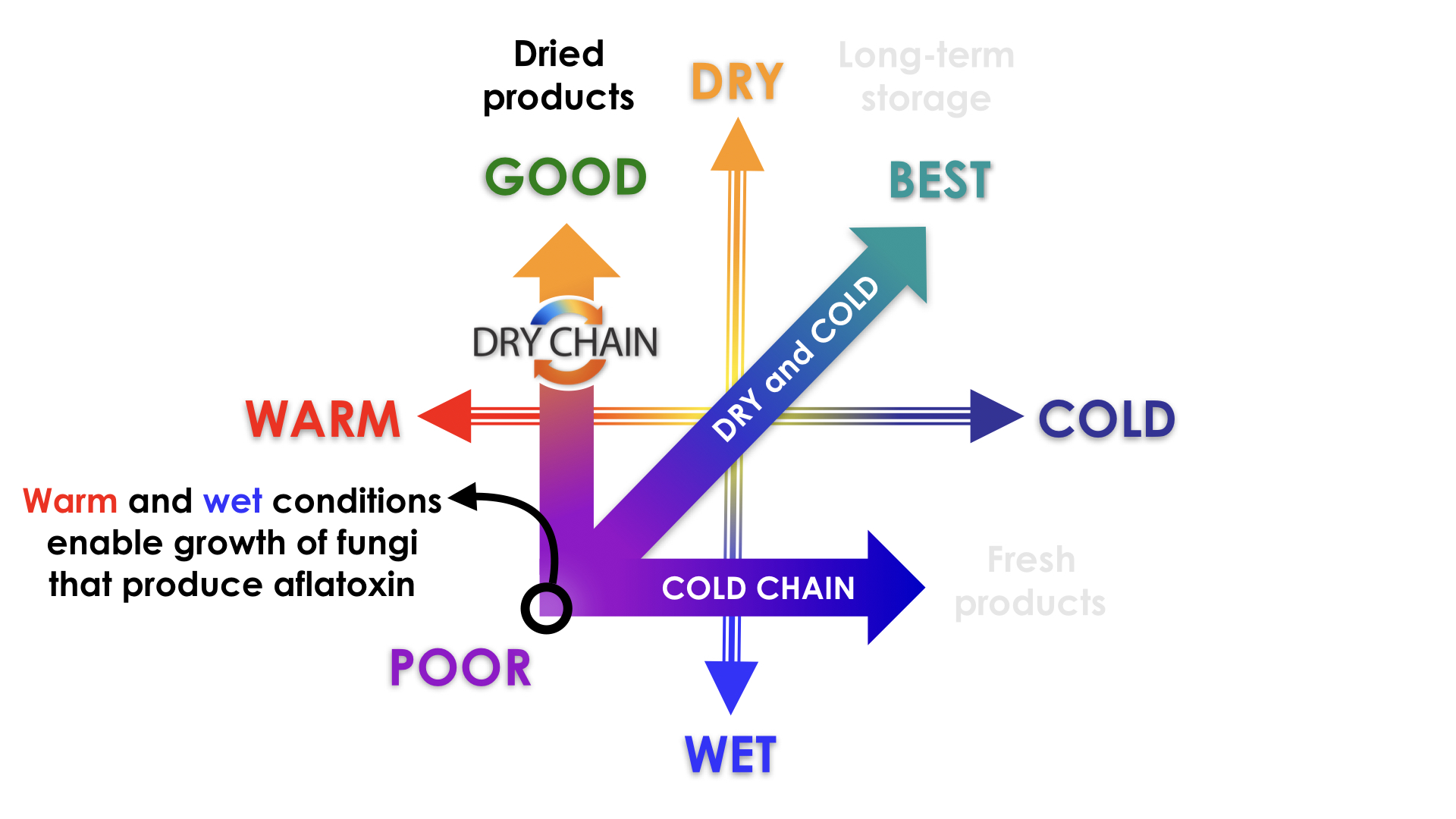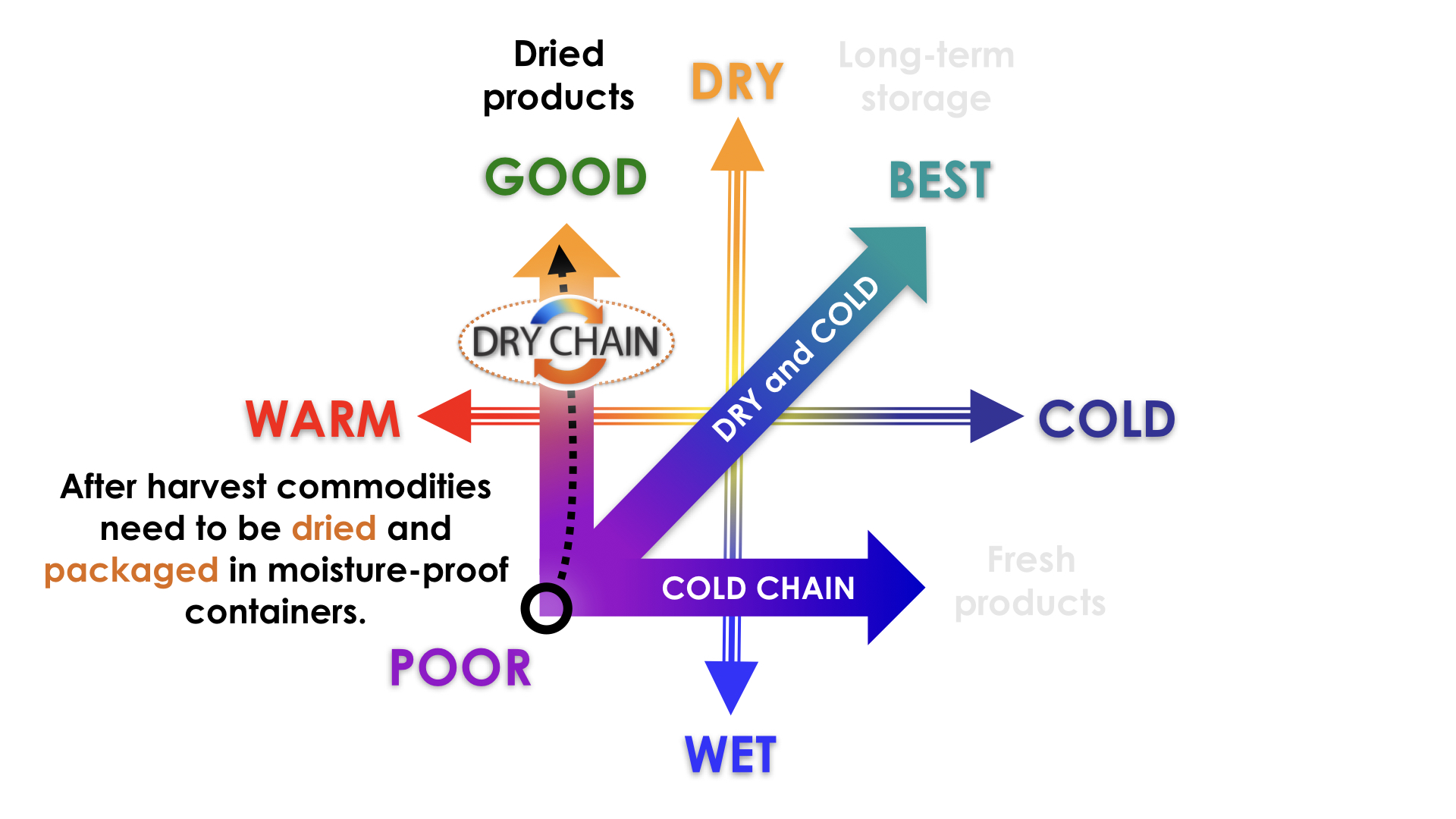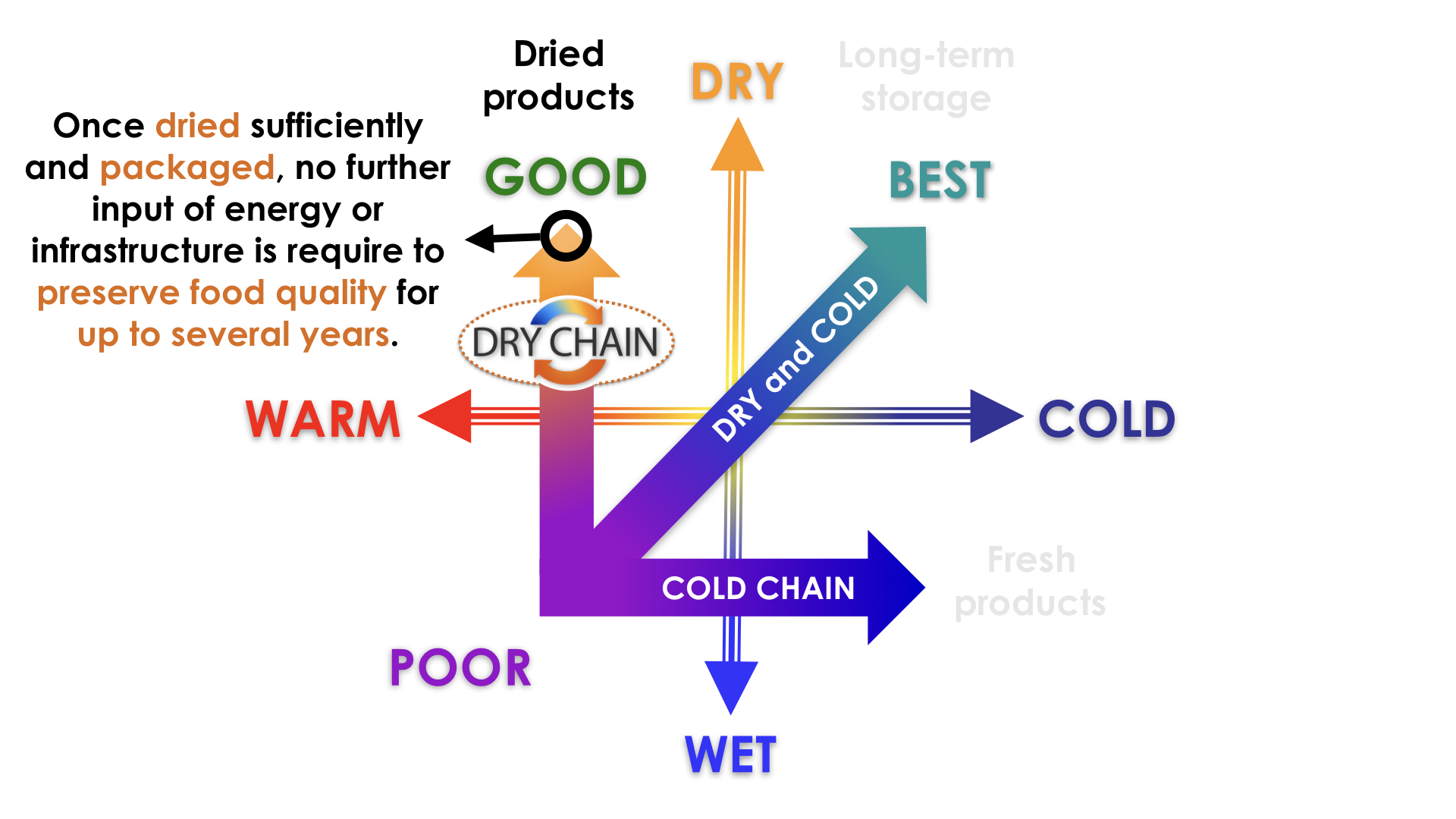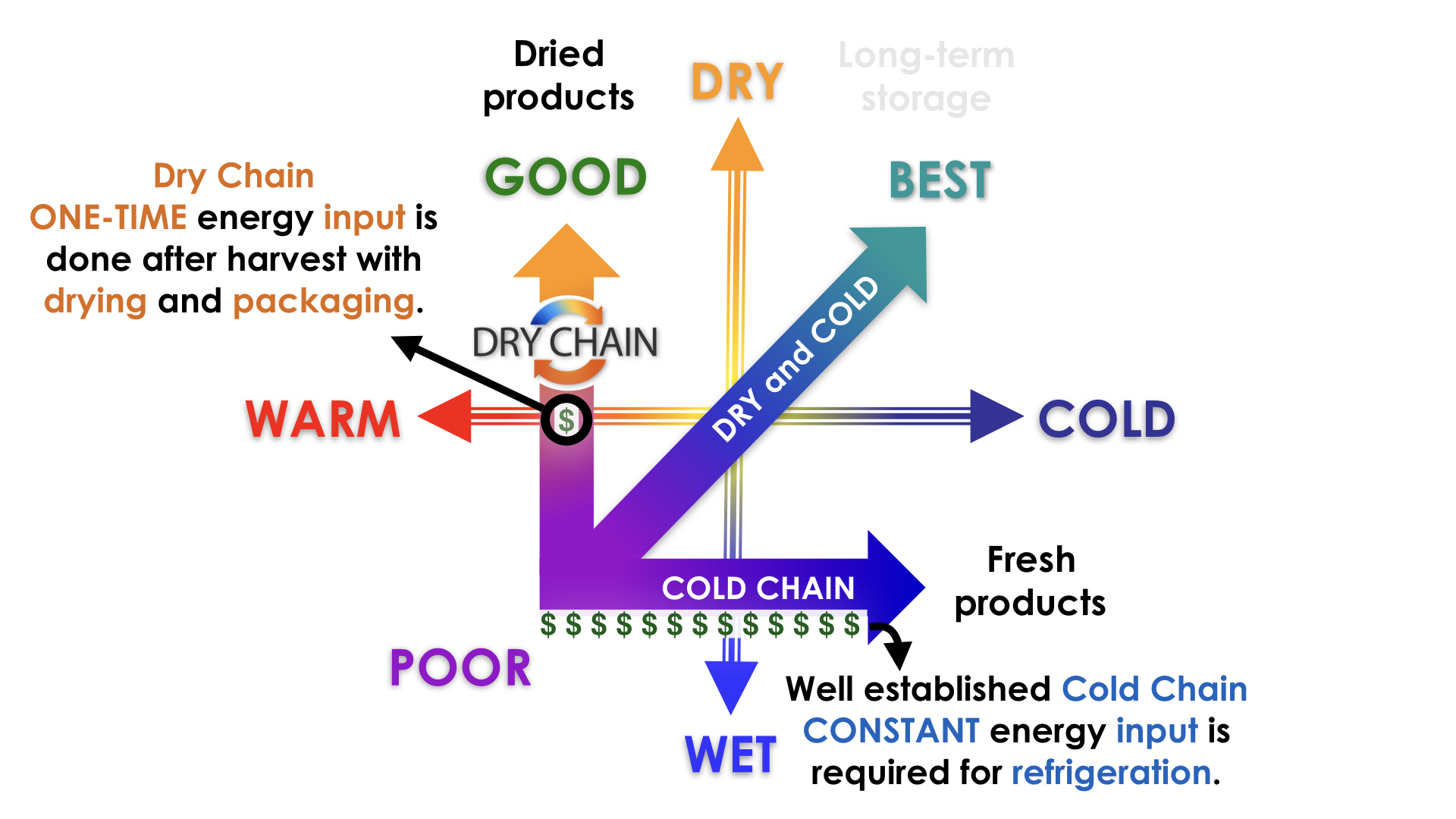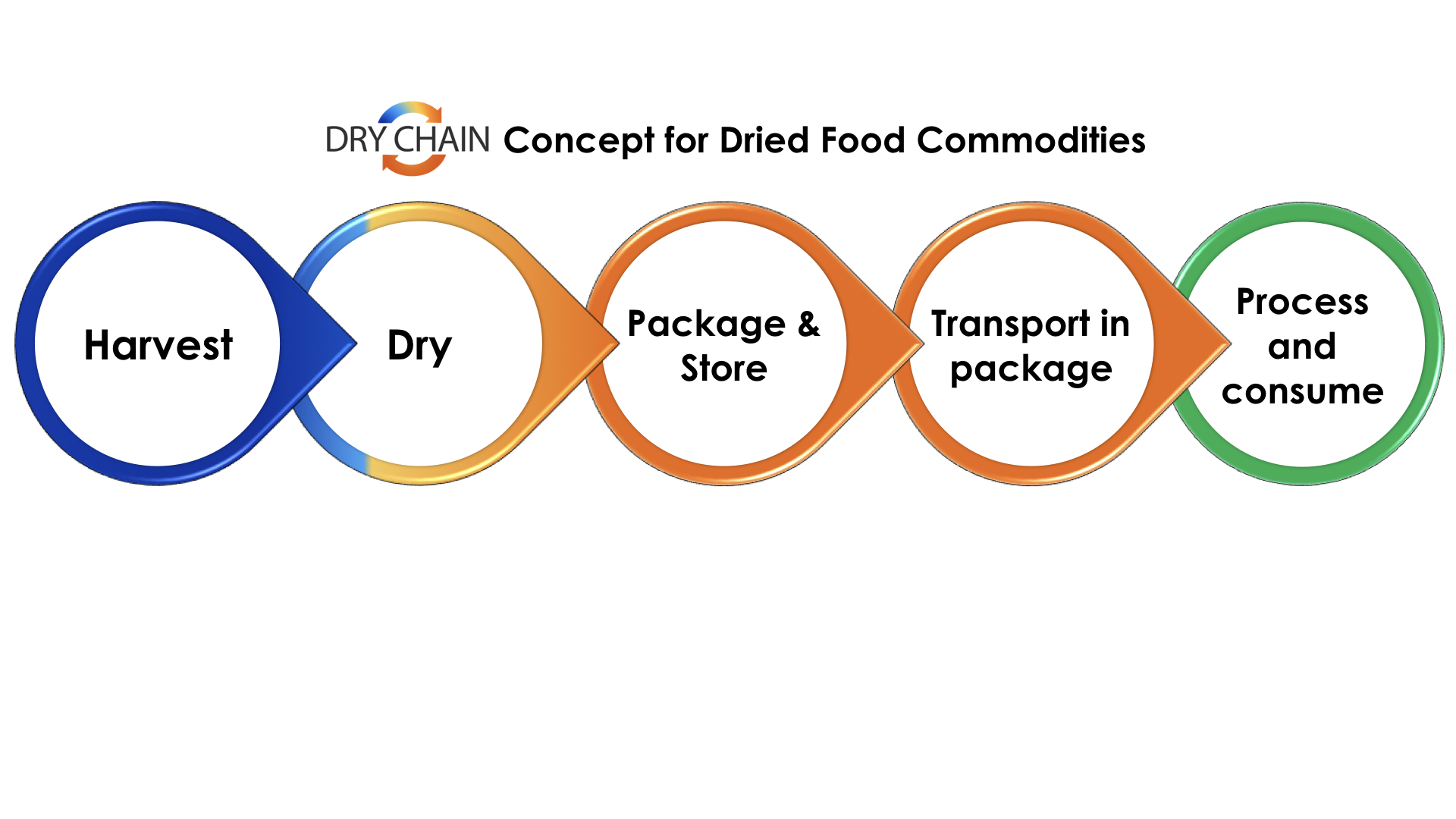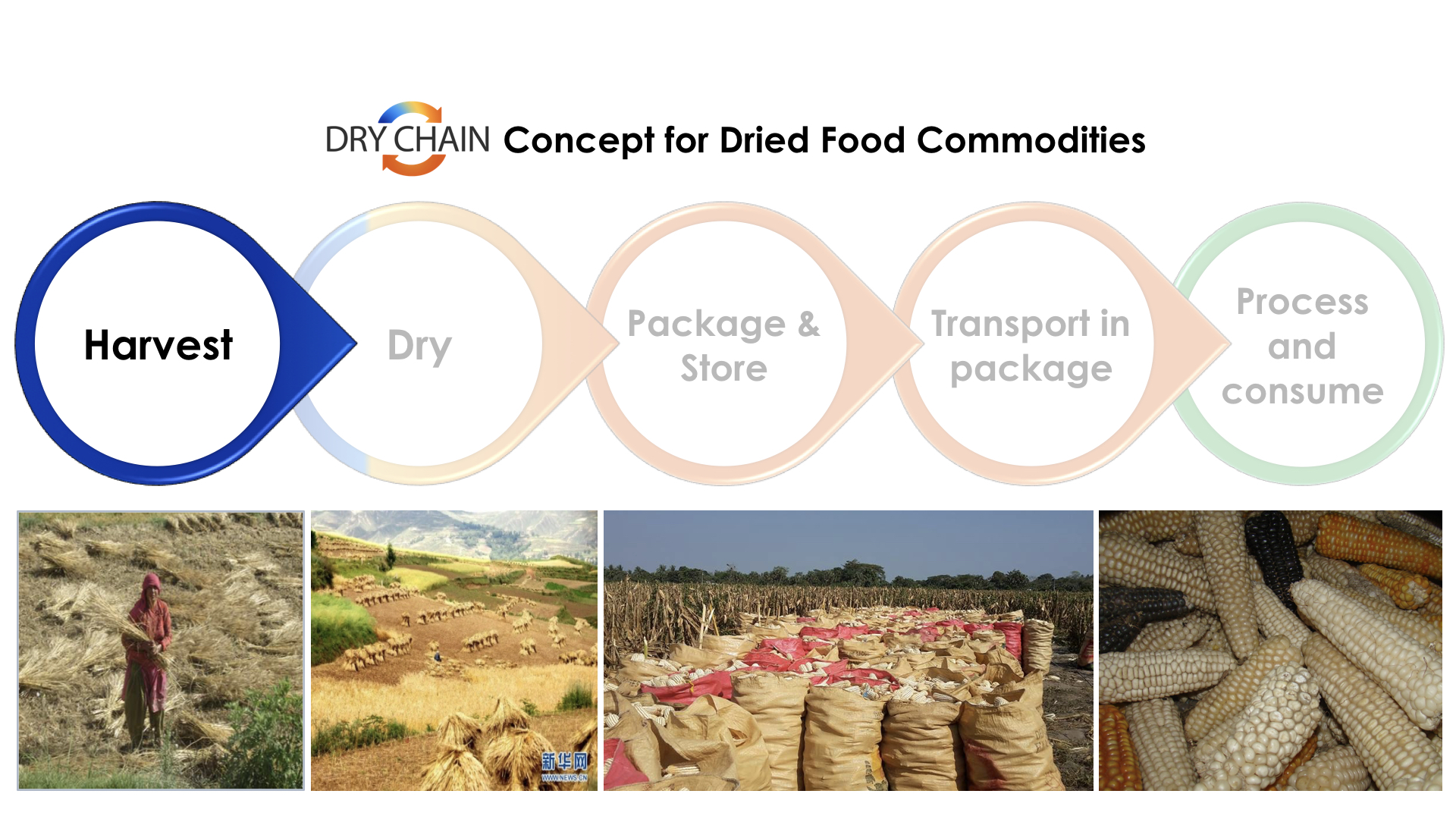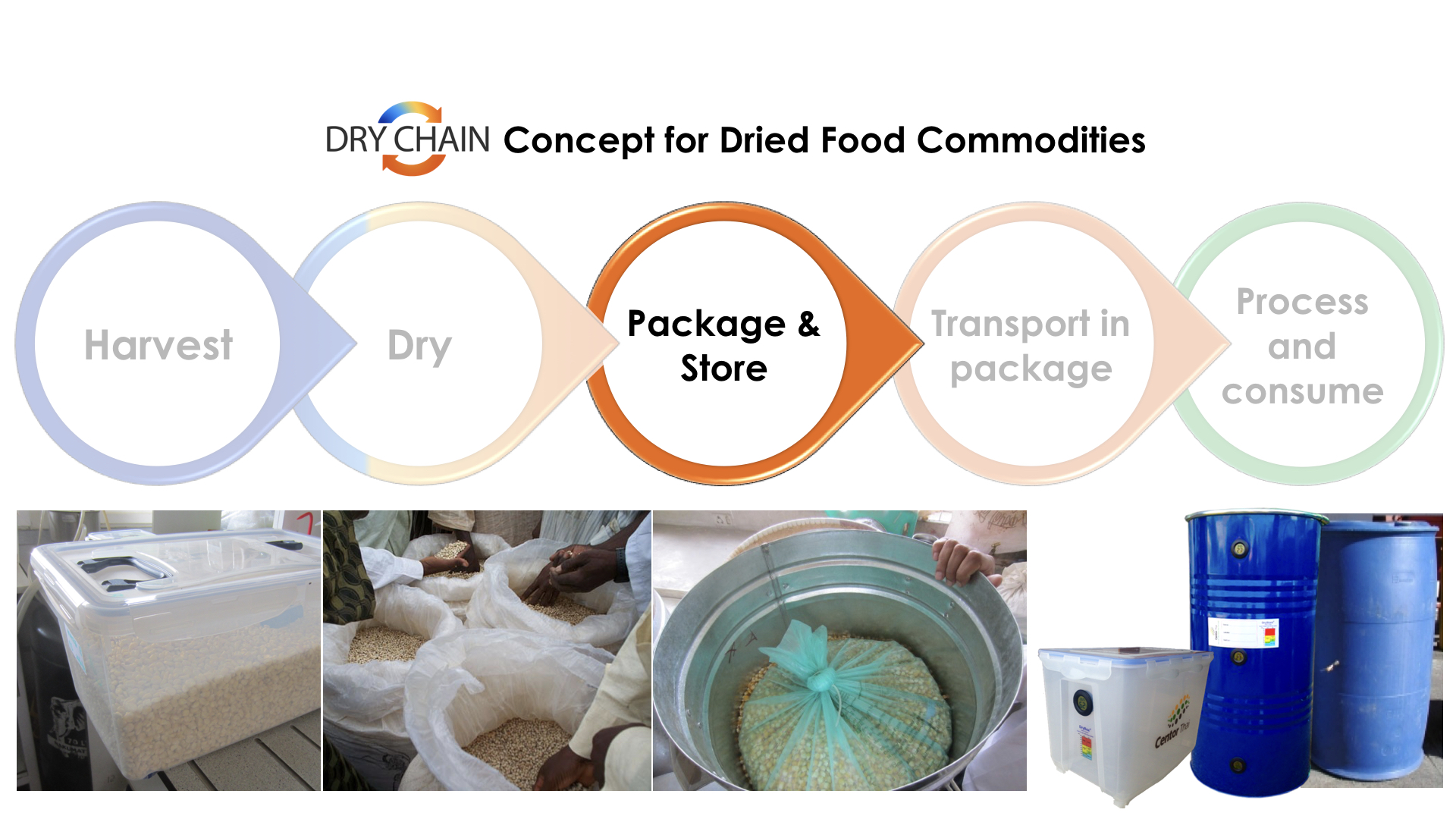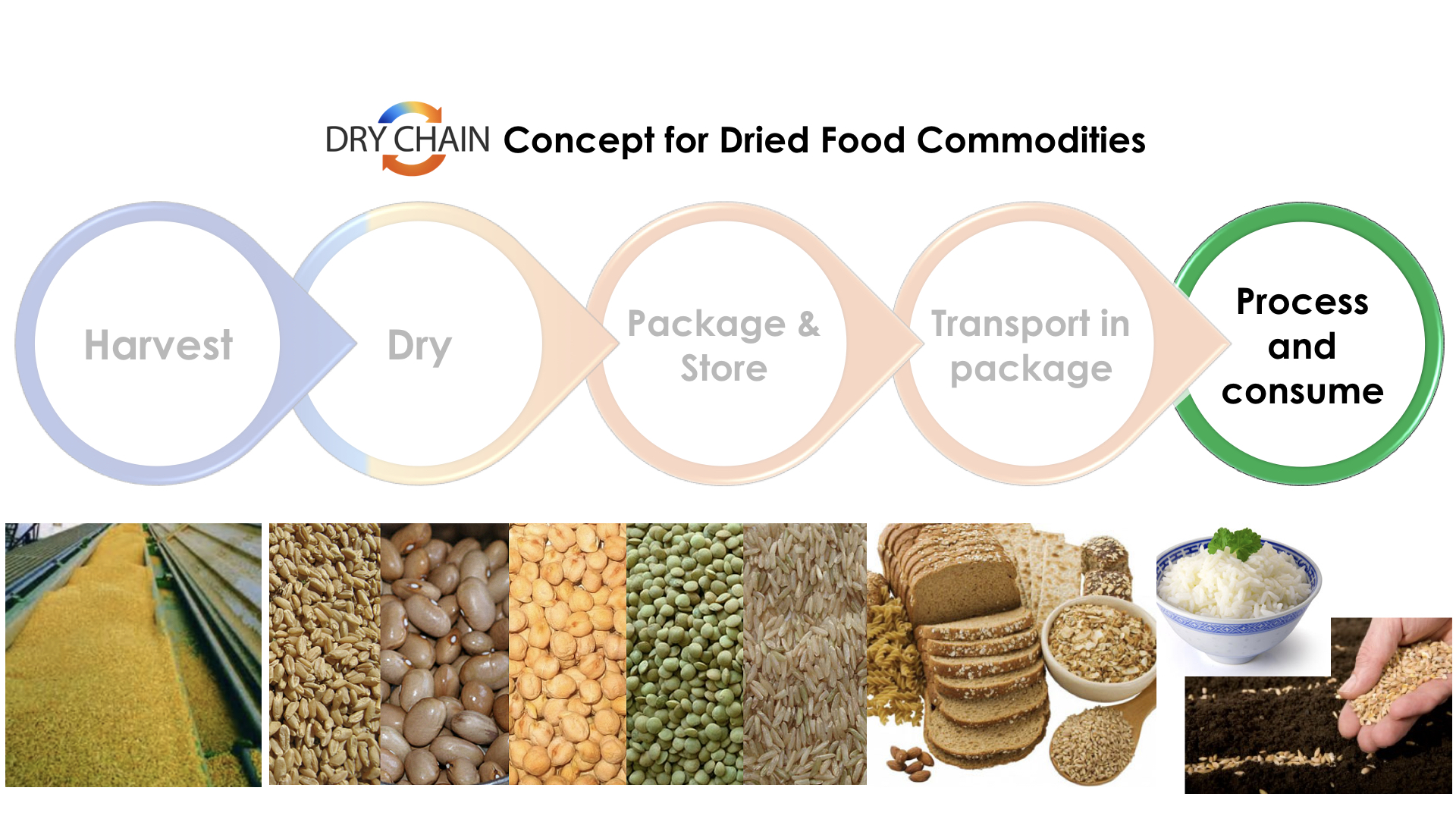ANY DURABLE SOLUTION HAS TO ADDRESS THE SOURCE OF THE PROBLEM:
MOISTURE AND HUMIDITY.
The solution to this problem is to implement our “dry chain” concept for dried commodities. Modeled on the “cold chain” for fresh produce, which involves cooling of products immediately after harvest and using refrigeration to maintain cold conditions through the marketing chain, we focus on enabling drying of commodities after harvest and packaging of them in moisture-proof containers (plastic bags, metal bins, etc.) for storage and distribution. Once dried sufficiently and packaged, no further input of energy or infrastructure is required to preserve food quality for up to several years.
In a “climate-smart” application of the dry chain, commodities sufficiently dry at harvest will simply be packaged to capture the dryness and will remain in hermetic containers throughout storage and distribution. In rainy seasons and humid climates, facilitating access of farmers to heated-air or desiccant-based driers will enable products to be dried before packaging.
In both cases, sufficient drying and moisture-proof packaging will prevent fungal growth and accumulation of aflatoxin in storage, empowering farmers to choose when to eat and when to sell their products.
While aflatoxin accumulation is largely a result of poor storage conditions in low-income nations, it also is produced in the field prior to storage. Thus, we will also develop plants (e.g., maize, peanut, rice) that will prevent growth of the fungus on the kernels.
The combination of preventing accumulation of aflatoxin in both the field and during postharvest storage provides a comprehensive solution to a problem that affects 4.5 billion people around the world.





